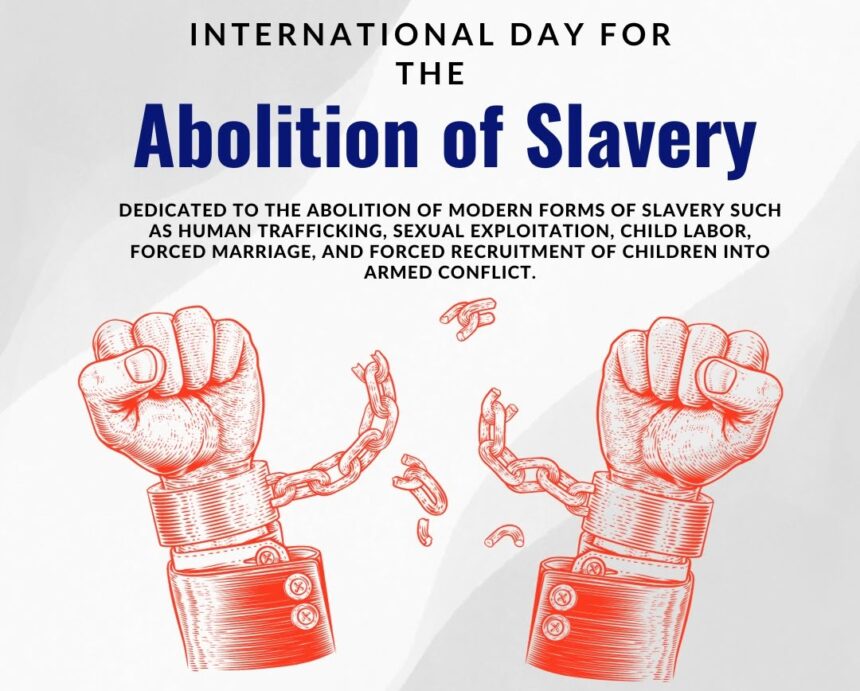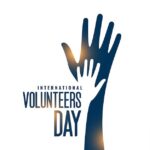🚫 Introduction: Breaking the Chains of Silence
December 2nd marks a day that the world cannot afford to forget—International Day for the Abolition of Slavery. While we might believe that slavery is a thing of the past, the grim reality is far more unsettling.
- 🚫 Introduction: Breaking the Chains of Silence
- 📜 History of the International Day for the Abolition of Slavery
- 🧠 7 Shocking Facts About Modern Slavery
- 🗓️ Timeline of the Abolition Movement
- ❓ Frequently Asked Questions (FAQs)
- ❓What is the International Day for the Abolition of Slavery?
- ❓Is slavery still legal anywhere?
- ❓What are modern forms of slavery?
- ❓How can I help abolish modern slavery?
- ❓Is there an official organization leading this cause?
- 🔍 Significance of the Day
- 🎯 How It’s Observed Around the World
- 💬 Meaningful Wishes and Messages
- 💡 Daily Life Impact: Why It Matters to You
- 📌 Important Points at a Glance
- 🏁 Conclusion: A Day to Reflect, React, and Reform
Today, over 50 million people worldwide are still trapped in modern forms of slavery—from forced labor and child exploitation to human trafficking and debt bondage. This observance isn’t merely about reflecting on history; it’s a global call to action to eradicate the persistent and evolving evils of slavery in all its forms.
In this detailed piece, we uncover the history, shocking facts, significance, observance practices, FAQs, and lasting impacts of this powerful day that aims to restore human dignity.
📜 History of the International Day for the Abolition of Slavery
The United Nations General Assembly declared December 2nd as the International Day for the Abolition of Slavery in 1986, through resolution A/RES/40/102. It was initiated to commemorate the adoption of the UN Convention for the Suppression of the Traffic in Persons and of the Exploitation of the Prostitution of Others, which was signed on December 2, 1949.
Key Objectives:
Raise awareness about modern slavery practices.
Promote laws and policies to combat slavery and human trafficking.
Empower victims and support their rehabilitation.
Encourage global and local action.
🧠 7 Shocking Facts About Modern Slavery
📊 50 Million People Enslaved Today
According to the ILO (2022), 50 million people are in modern slavery, with 28 million in forced labor and 22 million in forced marriages.🧒 1 in 4 Victims Are Children
Children are forced into begging, armed conflict, sex work, or dangerous labor.💼 86% of Forced Labor Happens in the Private Sector
Everyday businesses—from farming and construction to domestic work—are breeding grounds for exploitation.👩👧 Women and Girls Are Disproportionately Affected
71% of victims are female, often forced into sexual slavery and domestic servitude.🌍 It’s Not Just “Over There”
Modern slavery exists in developed countries too, including the US, UK, and EU nations—through illegal immigration exploitation, trafficking, and coercive employment.📱 Slavery Taints Many Supply Chains
Common goods like chocolate, coffee, textiles, electronics, and even smartphones may involve slave labor.🌐 Digital Trafficking Is on the Rise
Technology has made it easier for traffickers to lure, exploit, and control victims through online platforms.
🗓️ Timeline of the Abolition Movement
| Year | Event |
|---|---|
| 1807 | UK abolishes the slave trade through the Slave Trade Act. |
| 1865 | Slavery abolished in the US via the 13th Amendment. |
| 1948 | The Universal Declaration of Human Rights denounces slavery. |
| 1949 | UN adopts the Convention for the Suppression of the Traffic in Persons. |
| 1981 | Mauritania becomes the last country to abolish slavery legally. |
| 1986 | UN declares December 2nd as the International Day for the Abolition of Slavery. |
| 2000 | UN adopts the Palermo Protocol to combat trafficking. |
| 2021 | Global pandemic spikes child labor and slavery risks. |
❓ Frequently Asked Questions (FAQs)
❓What is the International Day for the Abolition of Slavery?
A United Nations observance held every December 2, to raise awareness and eliminate all forms of modern slavery.
❓Is slavery still legal anywhere?
While slavery is illegal globally, enforcement is weak in many regions. In some countries, slavery persists through cultural or economic coercion.
❓What are modern forms of slavery?
Forced labor
Debt bondage
Child labor
Sex trafficking
Forced marriage
Domestic servitude
❓How can I help abolish modern slavery?
Educate yourself and others.
Support ethical brands.
Report trafficking.
Volunteer or donate to anti-slavery NGOs.
Advocate for stronger laws and protections.
❓Is there an official organization leading this cause?
Yes, the International Labour Organization (ILO), UNODC, Anti-Slavery International, and Walk Free Foundation are major leaders.
🔍 Significance of the Day
The International Day for the Abolition of Slavery reminds us that freedom is still a privilege, not a universal right. It highlights:
1. Human Dignity
Every person deserves the right to live free from exploitation, coercion, and fear.
2. Policy and Legal Reform
Pushes nations to adopt and enforce anti-slavery laws, protect whistleblowers, and punish offenders.
3. Corporate Accountability
Raises pressure on businesses to audit supply chains, ensure ethical sourcing, and protect workers.
4. Empowerment of Victims
The day promotes rehabilitation, education, and economic support for survivors of slavery.
🎯 How It’s Observed Around the World
People, organizations, and governments commemorate the day through:
🎤 Awareness Events & Panel Talks
NGOs, universities, and government bodies organize sessions to educate communities.🎥 Film Screenings & Exhibitions
Documentaries and art pieces shed light on real stories of slavery.🧵 Campaigns Against Supply Chain Slavery
Consumers are urged to support fair trade and ethical brands.💻 Digital Activism
Using hashtags like #EndSlavery, #AbolishSlavery, #Dec2, and #ModernSlavery, people share information globally.🕯️ Vigils and Memorials
Remembering those who suffered or died due to slavery.
💬 Meaningful Wishes and Messages
“Freedom is a right, not a privilege. Stand up, speak out, and end slavery.”
“On this day, we remember that silence supports slavery—let your voice be the change.”
“Human dignity knows no chains. Celebrate freedom and fight for those without it.”
“Break the silence, break the chains. Today, we rise for justice.”
💡 Daily Life Impact: Why It Matters to You
Slavery isn’t just a historical issue—it affects your life, consumption, economy, and ethics every single day.
🛒 Consumer Choices
From your morning coffee to your phone, many everyday products may have slavery in their supply chains. Awareness helps you choose more ethical options.
🧠 Ethical Awareness
This day challenges you to examine privilege, injustice, and the systems you unconsciously support.
🌐 Global Responsibility
In a globalized world, your voice, vote, and wallet can impact slavery practices thousands of miles away.
🧍 Personal Growth
Volunteering, donating, or simply learning more about the topic cultivates empathy, critical thinking, and active citizenship.
📌 Important Points at a Glance
📅 Date: December 2nd, annually
📖 First observed: 1986
🌐 Organized by: United Nations (UN)
🚫 Focus: Ending modern slavery and human trafficking
🌍 Reach: Global observance with local and international participation
🧒 Main Victims: Women, children, migrants, the poor
💥 Theme: Human dignity, justice, and freedom
🏁 Conclusion: A Day to Reflect, React, and Reform
The International Day for the Abolition of Slavery is not just about the past—it’s about the fight still ongoing today.
In a world that’s fast, modern, and digital, it’s deeply disturbing that slavery continues to thrive in shadows. But it doesn’t have to.
Let December 2nd be a reminder:
Freedom isn’t truly freedom unless it’s for everyone.
Your awareness, action, and advocacy can help rewrite the story of millions still waiting for justice.








